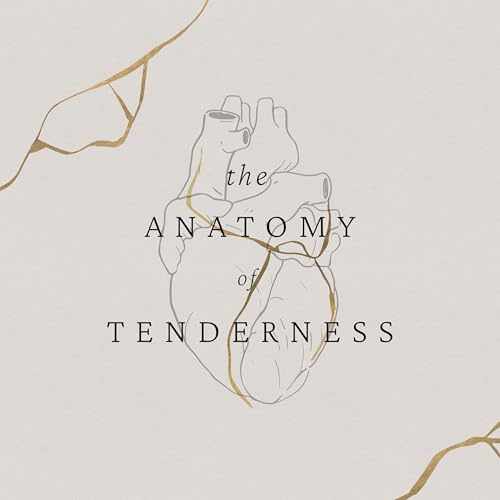In this episode of The Anatomy of Tenderness Podcast we share a little bit about what’s been going on in our lives this past Autumn. We’ll be back properly in the new year with some new conversations, but for now just wanted to share a conversation about Pope Francis’ newly translated book, Christmas at the Nativity, published by Focolare Media, in time for the season of Advent. We found this book to be such a powerful meditation on physical manifestations of tenderness, the incarnated reality of love, and wanted to unpack what that means together. While we’re approaching this reflection from the context of our Catholic faith, we hope that whatever your faith or belief-system, this conversation can offer some food for thought on the embodiment of tenderness and the physical form it can take in our lives as we show up for each other in love. Incarnation; in-carne "enfleshed", taking physical form in a body —a concrete or actual form of a quality or concept. In Christian theology, the Incarnation is the concept of God becoming human at the Nativity, or birth of Christ in Bethlehem, celebrated at Christmas. Some points we covered in this episode: St Francis of Assisi created the first nativity scene in 1223 to help people move beyond a sanitised or abstracted understanding of the Incarnation and meditate on the physicality of the birth of Christ, and the tenderness that this requires of us in response to his vulnerability as a human baby.This whole concept is radical because it turns all our traditional notions about power on its head; humanity has typically seen gods, kings, emporers as separate from the masses, invulnerable in their power, and here we have a story about the Creator of the universe stepping into the middle of muck and sweat and blood and poverty. This story breaks and remakes all of our preconceived ideas about power and puts vulnerability and tenderness centre stage instead.Meeting us here, stripped of all the usual trappings of power and privilege, our maker tells us that we are inherently loveable and loved, regardless of social position, influence, money, prestige, and anything else that the world might deem important.We can construct beautiful words around love and what it means; but tenderness has a highly visceral, physical side to it that the parental relationship sums up so well, given the way we’re called to offer physical care and protection to a child. Pope Francis points out that the health of a society, humanity, can be judged on how it treats its most vulnerable—its children.It’s easy to be tender towards humanity in an abstract way, but the challenge the Nativity offers us is this: can we be tender even in the most unglamorous, messy, and “ugly” of circumstances?If our tenderness is only theoretical, then it’s not worth much. Tenderness has to be incarnated; the word, made flesh. If we want someone to know that we love them, we have to do physical things to make them feel safe, loved, cared for, welcome in their bodies. We are, after all, a unity of both body and spirit. Some passages we quote in this episode of The Anatomy of Tenderness: “Advent is the season of the seed: Christ loved this symbol of the seed. The seed, he said, is the Word of God sown in the human heart…. Advent is the season of the secret, the secret of the growth of Christ, of Divine Love, growing in silence.”—Caryll Houselander, The Reed of God The Nativity scene that Houselander herself (both a writer and an artist) made is pictured in the photo that accompanies this episode on our website: theanatomyoftendernesspodcast.com “This is the gift we find at Christmas. We discover to our amazement that the Lord is absolute gratuity, absolute tender love. His glory does not overwhelm us, his presence does not terrify us. He is born in utter poverty in order to win our hearts by the wealth of his love.”—Pope Francis, Christmas at the Nativity “The child Jesus born in Bethlehem is the sign given by God to those who awaited salvation and he remains forever the sign of God’s tenderness and presence in our world… Today too children are a sign they are a sign of hope, a sign of life, but also a diagnostic sign…”—Pope Francis, Christmas at the Nativity “Jesus, newly born, was mirrored in the eyes of the woman, in the face of his mother. From her he received his first caresses, with her he exchanged the first smiles. With her began the revolution of tenderness.”—Pope Francis, Christmas at the Nativity Thank you so much for listening, and for your patience as we gather more conversations to share with you in the new year. Your enthusiasm and support truly means so much to us! We’re embracing a spirit of anti-perfectionism, and Sophie has sworn not to edit out our “ums” and “ers”, so you’ll have to hold her to this “new year’s resolution” going into 2024! With much love, Sophie & Léonie Thank you to Focolare Media for sponsoring this episode ...
Show More
Show Less
 Dec 6 20242 mins
Dec 6 20242 mins Nov 6 202412 mins
Nov 6 202412 mins Dec 5 202332 mins
Dec 5 202332 mins Aug 7 202340 mins
Aug 7 202340 mins Jul 7 202315 mins
Jul 7 202315 mins